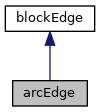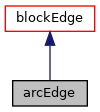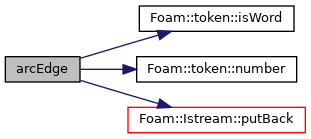|
| | TypeName ("arc") |
| |
| | arcEdge (const pointField &points, const point &origin, const edge &fromTo) |
| |
| | arcEdge (const pointField &points, const edge &fromTo, const point &midPoint) |
| |
| | arcEdge (const pointField &points, const point &origin, const label from, const label to) |
| |
| | arcEdge (const pointField &points, const label from, const label to, const point &midPoint) |
| |
| | arcEdge (const dictionary &dict, const label index, const searchableSurfaces &, const pointField &points, Istream &is) |
| |
| virtual | ~arcEdge ()=default |
| |
| point | position (const scalar lambda) const |
| |
| scalar | length () const noexcept |
| |
| | TypeName ("blockEdge") |
| |
| | declareRunTimeSelectionTable (autoPtr, blockEdge, Istream,(const dictionary &dict, const label index, const searchableSurfaces &geometry, const pointField &points, Istream &is),(dict, index, geometry, points, is)) |
| |
| | blockEdge (const pointField &points, const edge &fromTo) |
| |
| | blockEdge (const dictionary &dict, const label index, const pointField &points, Istream &is) |
| |
| virtual autoPtr< blockEdge > | clone () const |
| |
| virtual | ~blockEdge ()=default |
| |
| bool | valid () const noexcept |
| |
| label | start () const noexcept |
| |
| label | end () const noexcept |
| |
| const point & | firstPoint () const |
| |
| const point & | lastPoint () const |
| |
| int | compare (const blockEdge &e) const |
| |
| int | compare (const edge &e) const |
| |
| int | compare (const label start, const label end) const |
| |
| point | linearPosition (const scalar lambda) const |
| |
| virtual tmp< pointField > | position (const scalarList &lambdas) const |
| |
| void | write (Ostream &os, const dictionary &dict) const |
| |
A blockEdge defined as an arc of a circle.
The arc is normally defined by its endpoints and a point on its circumference, typically a midpoint. For example,
points ((1 0 0) (0 1 0));
arc 0 1 (0.707107 0.707107 0);
The arc can enclose an angle greater than 0 and less than 360 degrees.
The arc will frequently enclose an angle less than 180 degrees. For the case, it is possible to define the arc by its endpoints and its centre (origin) point. For example,
arc 0 1 origin (0 0 0);
When defined in the way, any discrepancy in the arc radius for the endpoints is resolved by adjusting the origin to ensure that the average radius is satisfied.
It is also possible to define a flatness factor as a multiplier of the calculated radius. For example,
arc 0 1 origin 1.1 (0 0 0);
- Source files
-
Definition at line 75 of file arcEdge.H.


 Public Member Functions inherited from blockEdge
Public Member Functions inherited from blockEdge Static Public Member Functions inherited from blockEdge
Static Public Member Functions inherited from blockEdge Protected Member Functions inherited from blockEdge
Protected Member Functions inherited from blockEdge Static Protected Member Functions inherited from blockEdge
Static Protected Member Functions inherited from blockEdge Protected Attributes inherited from blockEdge
Protected Attributes inherited from blockEdge